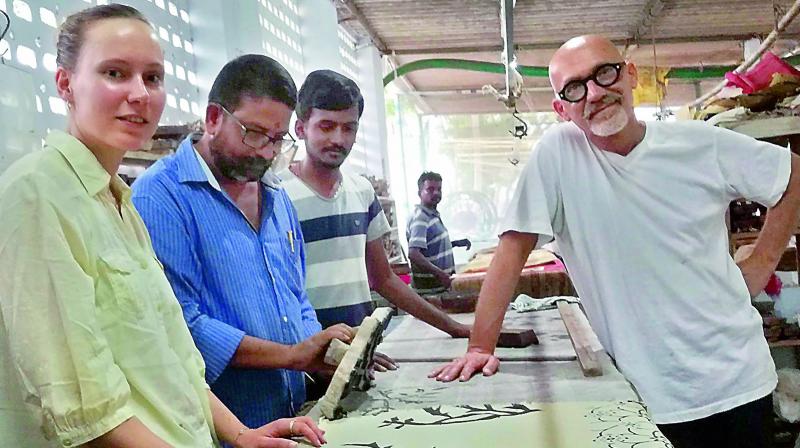Vijayawada: Fusion of Kalamkari art

VIJAYAWADA: The traditional Kalamkari art of Pedana is taking a new shape in fusion with contemporary Dutch art. A family of researchers, who came all the way from Holland in search of their lost heritage of 17th and 18th centuries, has come up with innovative Kalamkari designs by mixing the contemporary Dutch art with the Pedana Kalamkari art form.
During their stint in the East India Company, the Dutch took Kalamkari fabric to Holland and it became part of their traditional clothing back home. But after the East India Company lost its foothold, the cloth export ceased and later, the Kalamkari art form also ceased to exist in Holland. The fabrics from those times now remain as antiques in museums.
A team of researchers, backed by the Holland government, have come all the way to Pedana in search of their lost heritage and to take back the rare art of Kalamkari to Holland again.
Rudolf Lanfermiejer, an artist and his daughter Lily Lanfermiejer, also an artist who makes parasols, and his wife Jenne Sipman, a film-maker, toured extensively in Pedana, Sri Kalahasti and Ahmedabad to study various forms of Kalamkari works and finally, they chose Pitchuka Srinivas, a Kalamkari printer from Pedana, and Gangadhar Kondru, a Kalamkari block maker from the village, to learn how to make the Kalamkari fabric.
In the process, Mr. Lanfermiejer came up with a unique idea of mixing Dutch contemporary art on to Pedana Kalamkari blocks. Speaking to Deccan Chronicle, he said, “We are reinventing our lost heritage in Pedana. Kalamkari has been part of our culture for centuries but now no one has knowledge about the art, so we intend to take our past culture back home by learning the process of Kalamkari fabric making.”
“As an artist, I like landscapes and drawing portraits. I captured the process of Pedana Kalamkari fabric-making in my paintings and I am astonished to see the way the master craftsmen convert them onto Kalamkari wooden blocks. They did not miss an iota of detail from my paintings,” he said. “I was amazed to see the art after it was printed on to the cloth. They took my paintings to the next level without losing its soul,” he said.

